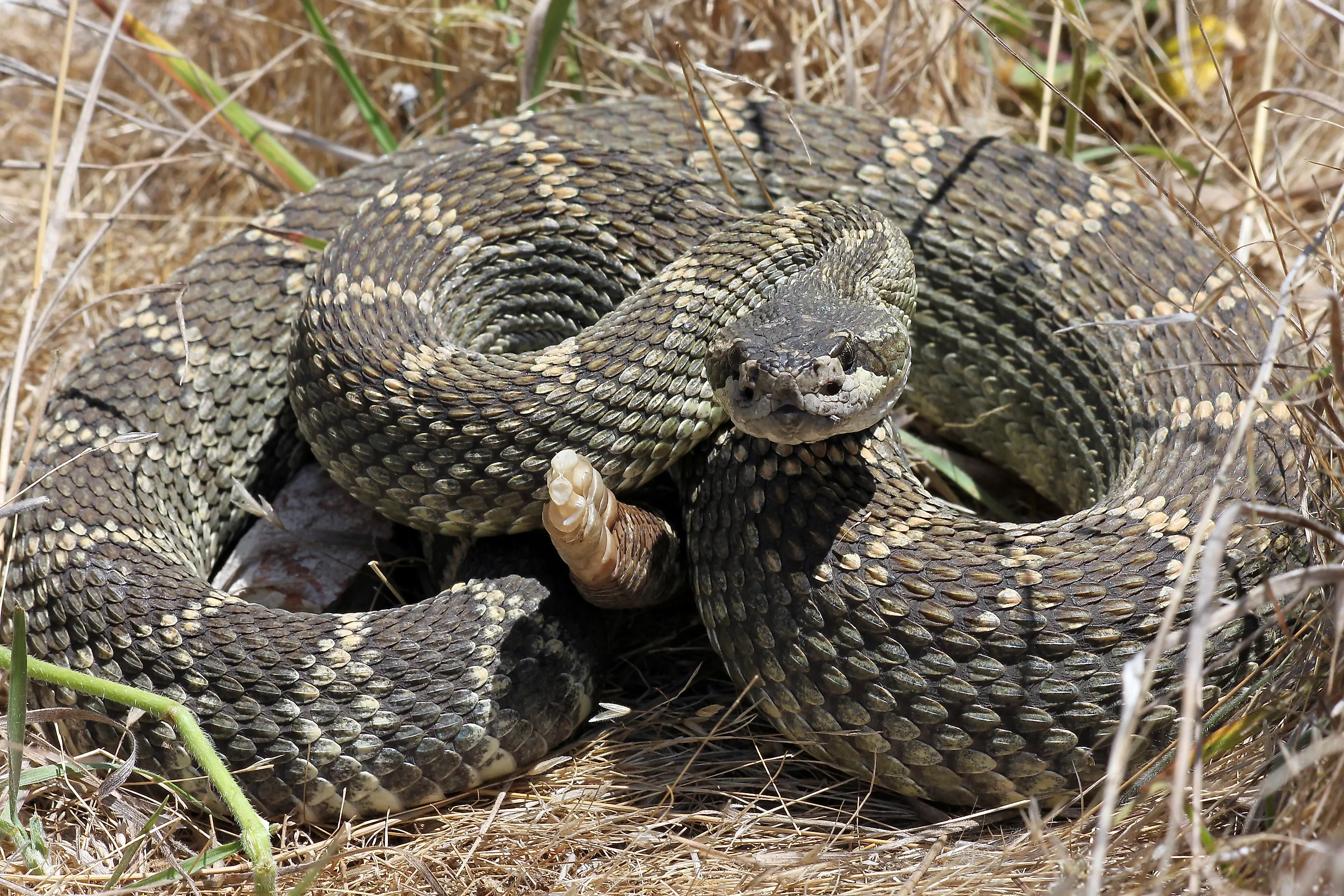
7 Most Rattlesnake Infested Areas in Washington
Washington is not a state known for its snakes. However, the state is surprisingly home to eleven different species. One of which is none other than the venomous Western Rattlesnake. It is the only venomous snake found in Washington. Also known as the northern Pacific rattlesnake, the snake is mostly found in Eastern Washington. These venomous creatures typically live in rock crevices exposed to sunshine.
Some of the best places to find the Western Rattlesnake in Washington are near lakes, rivers, and wetlands. Tributaries along the Columbia River, such as Crab Creek, are crawling with these snakes. Other regions that are more rocky, such as Douglas Creek, provide a natural haven. Here, we explore the seven most rattlesnake-infested areas in all of Washington.
Douglas Creek
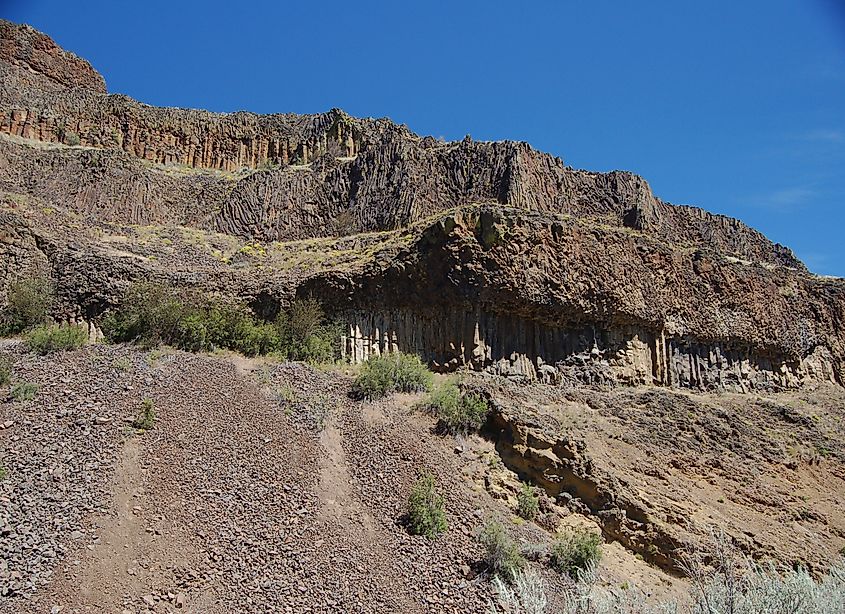
Douglas Creek is a favorite spot for locals to go hiking, camping, and fishing. People typically fish for rainbow trout in the lower stretches of the river. Running through the uplands east of Badger Mountain and past the farmland Waterville plateau, Douglas Creek’s rocky terrain and sunny exposures make it a haven for the Western Rattlesnake. The Washington Audubon Society designated Douglas Creek an Important Bird Area in Eastern Washington. Other animals visitors can see include mule deer, coyotes, bats, and porcupines. This natural area is not just a haven for humans but also provides ideal conditions for the Western Rattlesnake to thrive.
Crab Creek
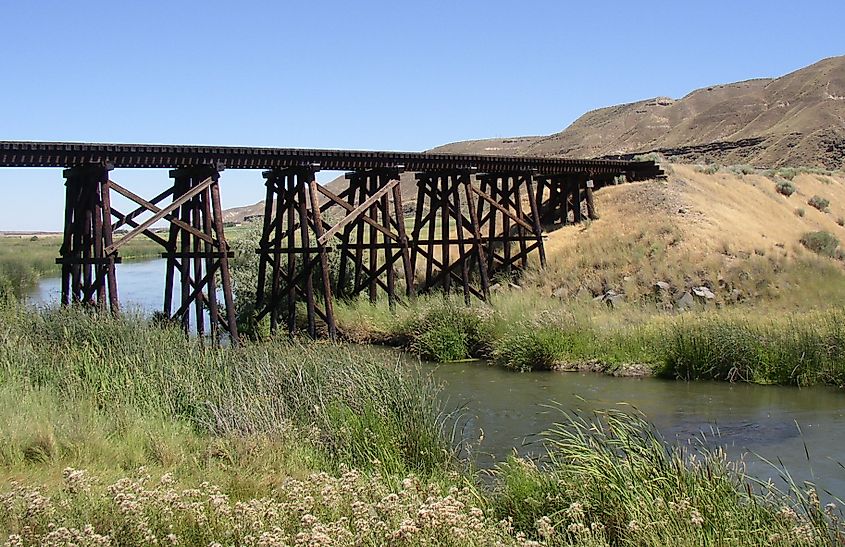
Lower Crab Creek, eight miles above its confluence with the Columbia River, looking east.
Crab Creek is another great spot for hiking and fishing in Washington. Hiking the Colombia National Wildlife Refuge goes along Crab Creek. The hike offers stunning views of basalt cliffs above seasonal lakes, and a lot of wildlife can be spotted. Birds, coyotes, and snakes are sometimes spotted on this hike. The sagebrush and tall grass are the perfect place for the Western Rattlesnake to take cover. The abundance of small rodents and other life means these snakes have easy access to food. In spring, rattlesnakes are less visible as they emerge from winter hibernation.
Yakima River Canyon
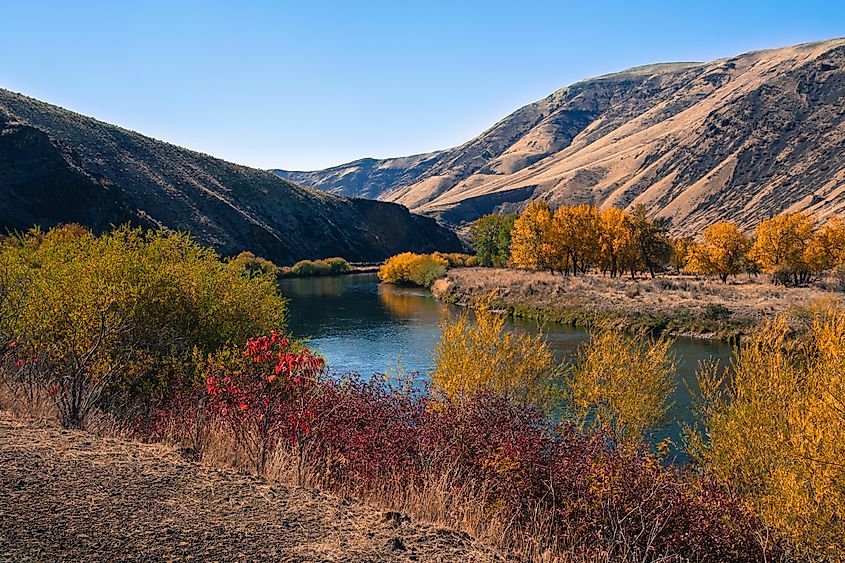
The Yakima River Canyon is a 20-mile stretch of the massive Yakima River. This 20-mile stretch of the Yakima River offers rugged ridges and grasslands, prime habitats for rattlesnakes. Yakima is the longest river entirely within Washington state, flowing for 214 miles on the Columbia plateau in Central Washington. The Yakima River Canyon flows between Ellensburg and Selah. The rocky ridges and grassy hillsides create ideal hiding spots for rattlesnakes, with abundant small mammals as prey. Nearby trails, such as the Cowiche Canyon Trail, are a great place to see stunning views and wildlife. This is also near the River Canyon, where visitors are more likely to see rattlesnakes. The Canyon's rocky landscape provides plenty of crevices for rattlesnakes to hide in. The abundance of small mammals also means there is no shortage of food here for the snakes. Other animals to be aware of here include Cougars, bears, and coyotes.
Sunnyside Snake River Wildlife Area
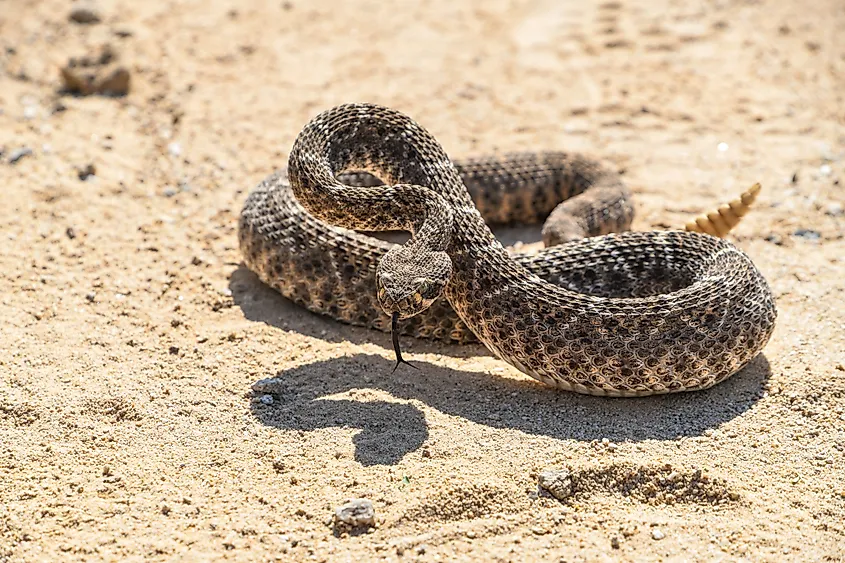
The conservation area covers 21,500 acres across multiple counties, including Franklin, Benton, and Yakima. The wildlife is unique here since it contains many habitats, including wetlands, grasslands, and cultivated cropland. The diversity of habitats is home to a range of wildlife from Deer, elk, waterfowl, upland game birds, and small mammals to reptiles, amphibians, and invertebrates. The wetlands are home to important migratory birds. In the dry landscapes of the Wildlife Area, rattlesnakes are also found. The Byron Unit is home to the most rattlesnakes. The rolling hills, basalt boulders, and wetlands here are a great habitat for the Western Rattlesnake.
Columbia River Gorge
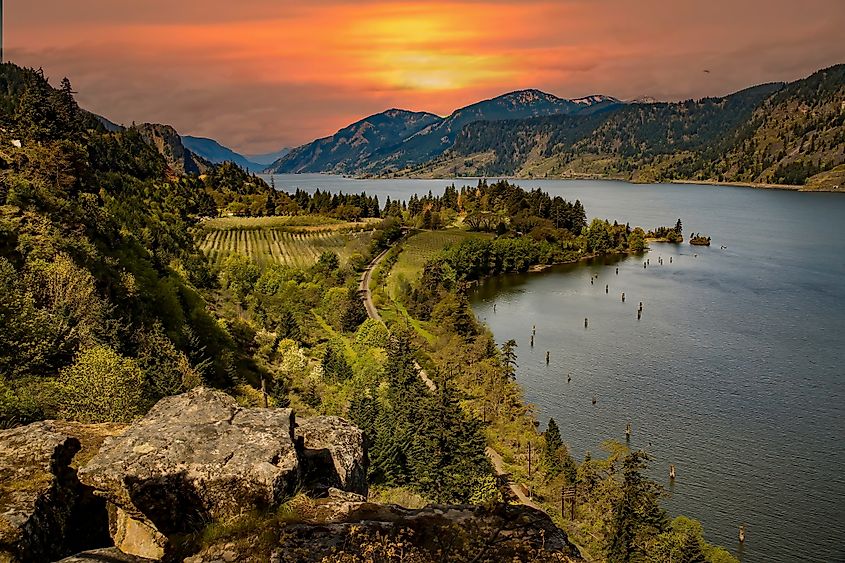
The Columbia River Gorge is one of the most stunning and ecologically diverse places to visit in the Pacific Northwest. Located on the Washington-Oregon border, this breathtaking gorge is a notable habitat for the Western Rattlesnake. The area’s unique mix of rocky outcrops, sunny exposures, and abundant wildlife make it an ideal environment for these venomous reptiles. A vibrant destination for outdoor enthusiasts, the gorge features numerous hiking trails, scenic viewpoints, and waterfalls that attract visitors year-round. However, hikers should be cautious, as the Western Rattlesnake is often spotted along the trails, particularly in rocky or sunlit areas. The Columbia River Gorge offers a remarkable combination of natural beauty and wildlife, making it a must-see location for nature lovers and adventurers. When exploring the gorge, staying alert for rattlesnakes is essential for a safe and enjoyable visit.
Moses Lake
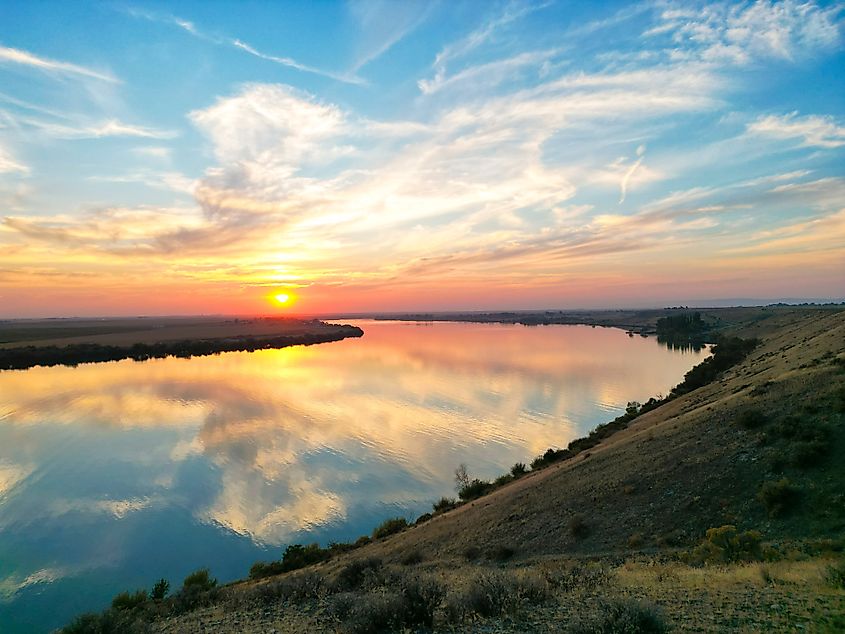
Moses Lake is also part of the Columbia River basin. It's well known in Washington as one of the most snake-infested lakes. Moses Lake was originally a natural lake, but it was dammed, making the water flow higher. Today, the lake has a surface area of 6,800 acres and is as deep as 38 feet in some places. Most of Washington's native snake species are found here. However, Moses Lake is particularly known for its population of rattlesnakes. The snakes are most active during the spring and summer months since this is their breeding season.
Lake Wenatchee
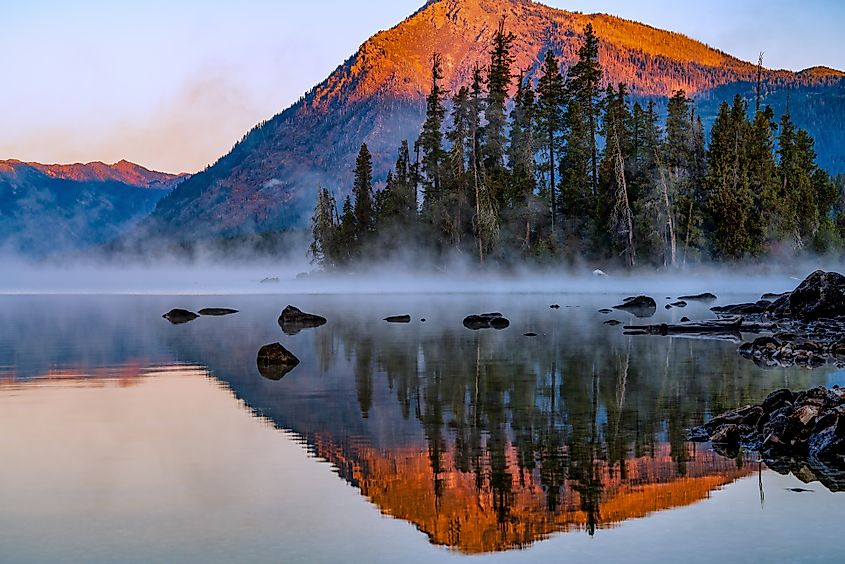
Lake Wenatchee is a mecca for wildlife. Surrounded by mountains, Lake Wenatchee supports various wildlife, including the Western Rattlesnake, drawn by its proximity to the Okanogan-Wenatchee National Forest. Lake Wenatchee is one of Washington's most snake-filled areas. This is also where the Western Rattlesnake is found. The rattlesnake isn't found here as much as it is in the other waterbodies mentioned on the list because it typically prefers Eastern Washington's dryer climate. However, the Okanogan-Wenatchee National Forest nearby draws the snake to this area. The nearby forest offers a sprawling two-million-acre wilderness that supports a range of wildlife, including the Western Rattlesnake.
Staying Safe Around Rattlesnakes
Rattlesnakes generally avoid human interaction, but their bites can be dangerous if provoked. Considering their bite can be fatal, it is important to practice safety if you spot a rattlesnake. Rattlesnakes can strike up to half their body length, so maintaining a safe distance is crucial. Although relatively rare, most snake bites are below the knees when they do happen. Wearing boots that cover the ankles and part of the calf makes it easier to minimize the chance of getting bit badly. If visitors hear the sound of a rattlesnake rattling, similar to a grasshopper, it is a good idea to travel in the opposite direction. Looking up photos of the snake ahead of time will also help guests identify the snake so they know to keep their distance.
Overall, the seven water bodies mentioned here are where people are most likely to see a rattlesnake in Washington. With these snake safety tips in mind, visitors can enjoy visiting any location with peace of mind.











